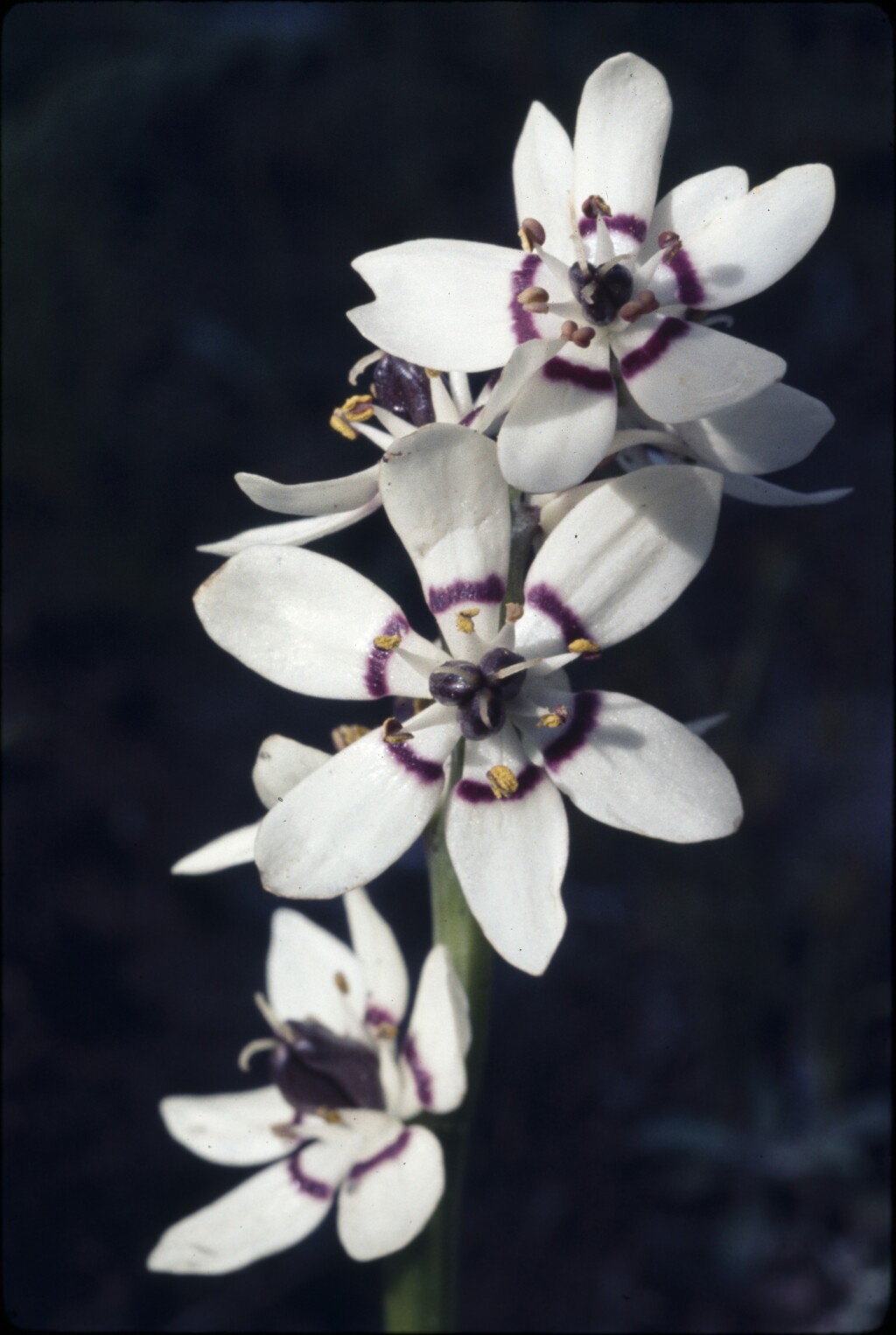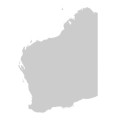Wurmbea dioica
Herbs usually 3.5–40 cm high, dioecious, or monoecious (then, often with some bisexual flowers within inflorescence). Leaves 3, linear to subulate or filiform with expanded sheathing base, 1–30 cm long, 0.5–6.0 mm wide (measured at midpoint). Flowers 1–15; tepals elliptic, 4–11 mm long, free or shortly fused basally, spreading, white with a basal purple or greenish nectary band about one third from base; nectary 1 per tepal, usually a single band, rarely narrowly divided at centre; stamens from half to two-thirds as long as tepals, anthers red to purple or yellow. Flowers Jun.–Nov.
LoM, MuM, Wim, GleP, Brid, VVP, VRiv, MSB, RobP, MuF, GipP, OtP, WaP, Gold, CVU, GGr, DunT, NIS, EGL, EGU, WPro, HSF, HNF, OtR, Strz, MonT, HFE, VAlp. Occurs widely and sometimes abundantly in low open-forests, woodland and grassland, usually in seasonally wet areas.
4 subspecies recognised in W. dioica, 3 are present in Victoria. A fourth, subsp. alba T.D. MacFarl. is apparently confined to south-western WA, and is distinguished by its entirely white flowers.





